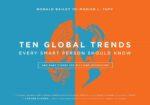Delighting in the possible
By Zafer Achi and Jennifer Garvey Berger In an unpredictable world, executives should stretch beyond managing the probable. It is only natural to seek certainty, especially in the face of the unknown.Long ago, shamans performed intricate dances to summon rain. It did not matter that any success they enjoyed was random, as long as the tribe felt that its water supply was in capable hands. Nowadays, late nights of number crunching, feasts of modelling, and the familiar rituals of presentations have replaced the rain dances of old. But often, the odds of generating reliable insights are not much better. Perhaps that is because our approach to the hardest problems—and the anxiety those problems create—is fundamentally misdirected. When most of us face a challenge, we typically fall back on our standard operating procedures. Call this “managing the probable.” In much of our education, and in many of our formative experiences, we have learned that some simple problems have one right answer. For more complicated problems, accepted algorithms can help us work out the best answer from among available options. We respond to uncertainty with analysis or leave that analysis to the experienced hands of others. We look for leaders who know the way forward and offer some assurance of predictability. This way of approaching situations involves a whole suite of routines grounded in a mind-set of clarity if not outright certainty. To that end, they are characterized by sharp-edged questions intended to narrow our focus:What is the expected return on this investment? What is the three-year plan for this venture? At what cost are they willing to settle? But asking these kinds of questions, very often legitimate in business-as-usual settings, may constrain management teams in atypical, complex situations, such as responding to a quickly changing market or revitalizing a privatised utility’s culture. […]










